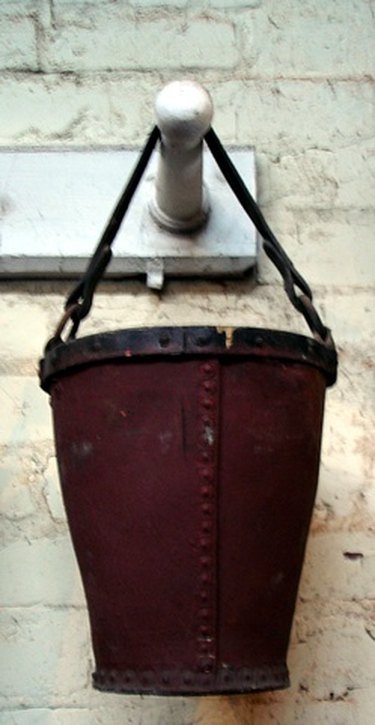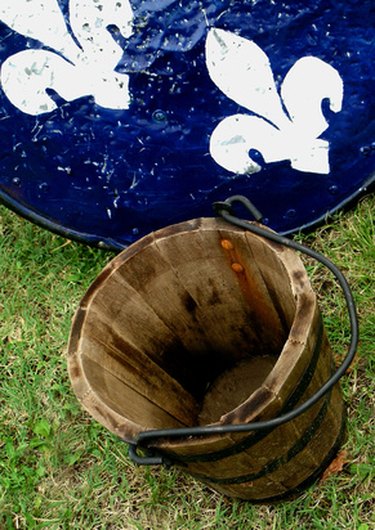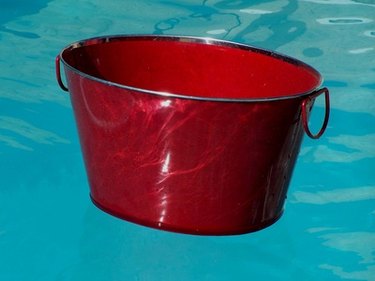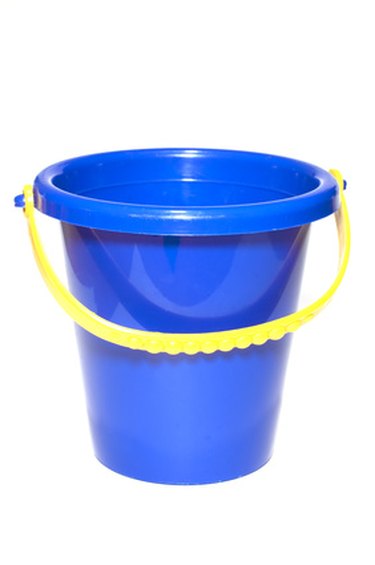
Open-ended containers with flat bottoms have existed since ancient times. Vessels commonly referred to as buckets, typically with a handle, or bail, across the top, are medieval inventions. Numerous materials have been used in the manufacture of buckets.
Etymology
Video of the Day
The word bucket appeared in the 13th century. It possibly derives from the Old English word "buc," meaning pitcher, bulging vessel or belly. Animal organs may have constituted the earliest buckets.
Video of the Day
Firefighting

Leather buckets, made from animal hides, became standard household items in Colonial America. Men and boys attended fires with buckets personally marked for easy retrieval after the confusion.
Wooden Buckets

Coopers fashioned wooden buckets by fitting wooden staves inside metal rings in the Middle Ages. Wet coopers specialized in watertight buckets, while dry coopers made buckets that could not hold water.
Galvanized Iron

Stanislas Sorel patented galvanization in 1837. The metallurgical process shielded iron or steel with a zinc-coating. For buckets, the process promised sturdy construction without fear of rust. Galvanized iron buckets replaced leather buckets as the firefighting buckets of choice.
Plastic

The first plastic buckets hit the market in 1967, but the first plastic pail covers did not follow until 1971. Until that time, metal covers sealed plastic buckets.